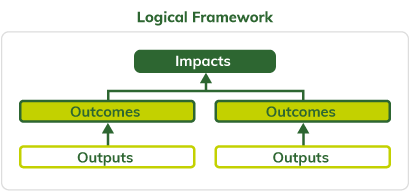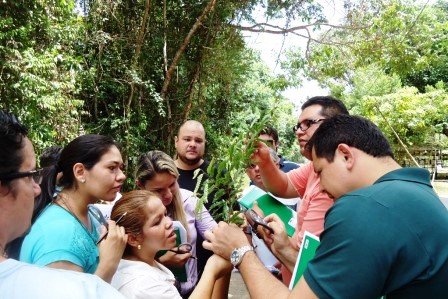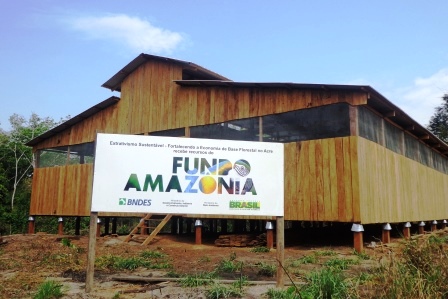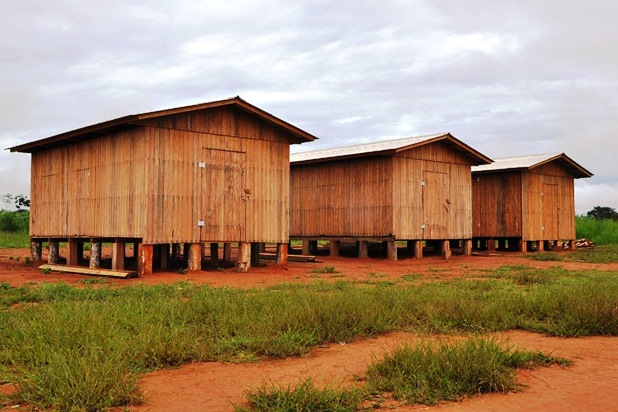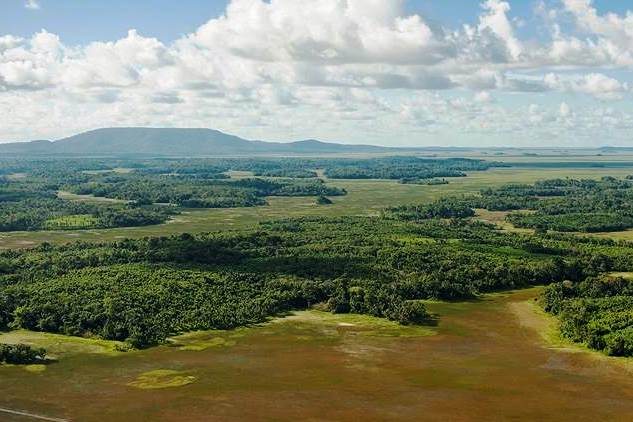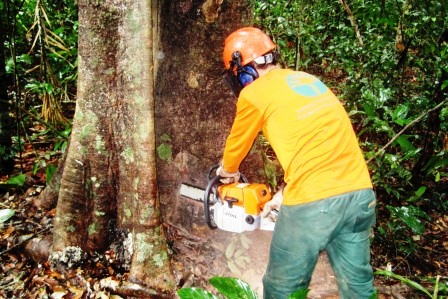RESULT AND IMPACT INDICATORS
Project activities contributed to the results related to the “sustainable production” (1) and “monitoring and control” (2) components of the Amazon Fund’s Logical Framework.
Direct effect 1.4: Deforested and degraded areas recovered and used for economic and ecological conservation purposes in the Municipality of Carlinda
The indicators established for monitoring this objective were:
- Areas of permanent preservation (PAPs) in process of recovery (outcome indicator)
Goal: 1,722 | Results achieved: 1,912
- Seedlings produced and distributed (output indicator)
Goal: 300,000 | Results achieved: 759,000
- Participants in workshops to raise awareness for the preservation and reforestation of APPs (output indicator)
Goal: 3,660 | Results achieved: 4,136
The environmental education activities carried out with students and farmers aimed to raise awareness of the importance of forest preservation and the recovery of riparian forests.
Direct effect 2.1: Municipal Secretariat of Environment and Tourism (SEMMAT) of Carlinda structured and modernized
The indicators established for monitoring this objective were:
- No. of employees effectively using the acquired knowledge (outcome indicator)
Goal: 3 | Results achieved: 3
SEMMAT’s institutional strengthening was achieved by acquiring computer equipment, operational and support materials, as well as by training three instructors to support the actions of the project.
- No. of technical assistance provided by SEMMAT (output indicator)
Goal: 444 | Results achieved: 614
Rural producers received technical assistance for the recovery and maintenance of degraded APPs, including guidelines on planting seedlings, direct sowing of seeds, conducting natural regeneration, breaking seed dormancy, control of leaf-cutting ants and management of weeds. In all visits, farmers received assistance on the environmental importance of restoring APPs and information on current environmental legislation.
- Annual deforestation in the municipality of Carlinda
Baseline: 0.7 km2 (2011) | Observed index: 2.1 km2 (2019)
The annual deforestation rate by shallow cut in 2011 (year before the beginning of the project’s actions¹) was 0.7 km2, while in 2019 this rate was 2.1 km2, i.e., there was an increase in deforestation in the municipality. To put this increase in perspective, it is worth mentioning that in 2004² 41.2 km2 were deforested in the municipality of Carlinda.
|
Year
|
Deforested area in the Municipality of Carlinda
|
|
2011
|
0.7
|
|
2012
|
0.1
|
|
2013
|
4.3
|
|
2014
|
1.5
|
|
2015
|
2.5
|
|
2016
|
5.1
|
|
2017
|
2.4
|
|
2018
|
2.4
|
|
2019
|
2.1
|
Source: Elaborated by the authors based on information from INPE’s PRODES System³.
¹ Annual deforestation rates have been calculated by INPE for the periods of August to July of each year uninterruptedly since 1988.
² The year 2004 was one of the worst years regarding high rates of deforestation in the Legal Amazon
³ Inpe's PRODES system performs the inventory of primary forest loss through the use of Earth observation satellite images for the entire length of the Legal Amazon.
Institutional and administrative aspects
For implementing the project “Buriti Springs” the Municipal Secretariat of Environment and Tourism (SEMMAT) of the municipality of Carlinda established a partnership with the Instituto Centro de Vida (ICV), which supported SEMMAT in structuring the municipal environment system and in creating environmental monitoring and management instruments.
ICV’s geotechnology center has produced spatial databases of the municipality of Carlinda, including its hydrography and soil coverage of rural properties. From these bases, it developed a model for delimitation and diagnosis of APPs, according to the rules established by the new Forest Code, providing information on the environmental liabilities of rural properties and their level of degradation.
The Municipal Secretariat of Education of Carlinda also supported the project, in environmental education actions. Throughout the project, activities were carried out with students from the state and municipal public network by lectures at schools, visits to the municipal nursery and to demonstration units of restoration of APPs.
Risks and lessons learned
During the execution of the project, Law no. 12.651/2012, which disposes about the protection of the native vegetation, also known as the new “Forest Code,” was enacted. This law was passed after intense debates in the legislature and in Brazilian society, introducing relevant changes in Brazilian legislation on forests and native vegetation.
Within the project, these changes in legislation affected the execution of the activities and the project had to have its deadline extended for its complete execution, having achieved the planned goals. It should be noted that the average cost of restoring the APPs was very low, by mobilizing rural producers (with no cost to the project) at the stage of their implementation in the rural properties themselves.
In a broader context, the project added learning from Amazon Fund support to municipal government projects. Note that three of the ten approved projects were cancelled and one of the projects had its scope greatly reduced (project “Jacundá, Municipality of Green Economy”).
The causes that motivated the cancellations or reduction in the scope of the municipalities’ projects are varied, such as delays due to difficulties in meeting the pre-contract conditions, the occurrence of municipal elections with disinterest of the new administrations in implementing the projects and the municipalities’ difficulty in proving, including during the implementation period of the projects, their fiscal good standing, since the legislation only authorizes the release of resources by BNDES to public or private entities that are in compliance with the Brazilian Internal Revenue Service and the National Treasury Attorney General’s Office.
Most of the municipal administration projects supported by the Amazon Fund were also characterized by small investments. Based on these findings, the Amazon Fund Advisory Committee (COFA) discontinued, in 2013, the approval of new direct support from the Amazon Fund to municipalities. COFA’s new strategy now foresees indirect support to municipalities via larger projects coordinated by reference institutions or states of the federation.
This new strategy established by COFA has not significantly expanded the support to municipalities to contain deforestation, thus remaining the challenge of engaging municipalities, important links in society, in a sustainable development agenda that values the standing forest.
Sustainability of results
The project contributed to the physical and operational structuring of the Municipal Secretariat of Environment and Tourism (SEMMAT) of the municipality of Carlinda, in the state of Mato Grosso. Conditions were created for SEMMAT to structure and consolidate a database to manage the recovery actions of APPs of the rural properties benefited by the project.
Environmental education, training, technical assistance and rural extension (ATER) activities, in addition to the supply of inputs for the recovery actions of APPs, mobilized rural producers in the planning and execution of recovery actions of deforested areas in their rural properties. This set of initiatives resulted in the commitment of rural producers to the environmental regularization of their properties, including their registration in the Rural Environmental Register (CAR), an instrument provided for in the Forest Code approved in 2012.
The restoration of APPs carried out in the municipality of Carlinda became a reference for the other municipalities in the “Portal da Amazônia,” resulting in the exchange of experiences with the technicians of the municipalities in the northern region of the state of Mato Grosso.


